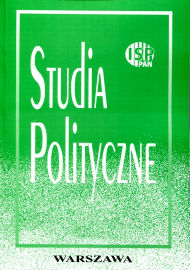Ewolucja systemu wyborczego Serbii w latach 1990–2011. Od manipulacji do demokratyzacji
The Evolution of the Electoral System in Serbia from 1990 to 2011. From Manipulation to Democratisation
Author(s): Dominika Mikucka-WójtowiczSubject(s): Politics / Political Sciences
Published by: Instytut Studiów Politycznych PAN
Keywords: Serbian electoral system; electoral reforms; manipulation; democratisation
Summary/Abstract: In the opinion of numerous political scientists such as Arend Liyphart or Samuel Huntington, for instance, the electoral system constitutes the single most crucial component of representative democracy, while the selection of specific solutions is of fundamental significance to the course of the democratisation process. For years, scholars have been have been in dispute as to whether or not there exists a system which would be infallible in any and every social, political or cultural context and their opinions on the matter are divided. In principle, this dispute concerns the selection of the electoral formula. However, no less emotion is also aroused by the choice of specific elements of individual systems, such as, for example, the division of a country into electoral districts or the method of counting the votes for a mandate. For these matters have an impact on the final results of elections and on what follows from that, the configuration of the representative body. Which is why it is unsurprising that politicians normally force the kind of solutions that they perceive as favourable to their own party, albeit that, as many an example demonstrates, they are often wrong in their assessment. The aim of the theoretical section of this paper is to outline the standpoints adopted in the aforementioned conflict by specialists in the field of electoral systems, such as Dieter Nohlen or Giovanni Sartori, and by transitologists like Arend Liyphart, Guillermo O’Donnell and Phillipe C. Schmitter. In the analytical section, the author focuses on the evolution of the electoral system in Serbia. The analysis starts from 1990, when the first free and competitive elections were held there, although, at the time, Serbia was still formally one of the states of the Socialist Federal Republic of Yugoslavia. It follows through to 2011, when the most recent significant reforms to the electoral law were carried out. In the author's opinion, the electoral reforms of the 1990s were intended first and foremost to ensure the dominant position of the governing party, the Socialist Party of Serbia, which triggers an inclination to style them manipulations or gerrymandering on the part of those in power. In turn, following what has been termed the democratic breakthrough, in other words, the assumption of power by the opposition in the autumn of 2000, the electoral system genuinely underwent democratisation, often under strong pressure from the EU. However, it should be emphasised that, far from being revoked without further ado, some of the controversial solutions adopted by Slobodan Milošević were, on the contrary, subjected to even greater perversion, such as, for instance, the division of mandates within the compass of the winning lists and the fact that the deputies were subordinate to the party leaders. Besides this, inconsistencies occurred in the implementation of solutions intended to increase the system's inclusiveness.
Journal: Studia Polityczne
- Issue Year: 2012
- Issue No: 30
- Page Range: 77-108
- Page Count: 32
- Language: Polish

